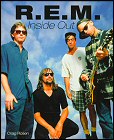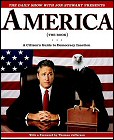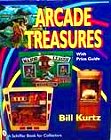
 Story: When Rosa Parks refuses to give up her seat on a segregated bus, Montgomery, Alabama’s civil rights community settles on a young pastor named Martin Luther King, Jr. as its main spokesman and leader. The lengthy boycott eventually pushes King to national prominence. King and other activists formed the Southern Christian Leadership Conference to promote nonviolent protest against segregation. While protests in Birmingham and Selma helped motivate reluctant politicians to pass important legislation, and the 1963 march on Washington produced one of the twentieth century’s most famous speeches, SCLC was almost always underfunded and understaffed, swept along by events as much as it initiated action. Caught between politicians who wanted to move more slowly and radical activists who felt he wasn’t moving nearly fast enough, King pursued a breakneck schedule of speaking engagements, meetings, and protests while the FBI sought to use his private life and friendships with suspected Communists to turn the country against him. Even as the Vietnam War distracted the country from the civil rights movement, King worked to call attention to the economic and social inequities inherent in American society, until an assassin’s bullet ended his life.
Story: When Rosa Parks refuses to give up her seat on a segregated bus, Montgomery, Alabama’s civil rights community settles on a young pastor named Martin Luther King, Jr. as its main spokesman and leader. The lengthy boycott eventually pushes King to national prominence. King and other activists formed the Southern Christian Leadership Conference to promote nonviolent protest against segregation. While protests in Birmingham and Selma helped motivate reluctant politicians to pass important legislation, and the 1963 march on Washington produced one of the twentieth century’s most famous speeches, SCLC was almost always underfunded and understaffed, swept along by events as much as it initiated action. Caught between politicians who wanted to move more slowly and radical activists who felt he wasn’t moving nearly fast enough, King pursued a breakneck schedule of speaking engagements, meetings, and protests while the FBI sought to use his private life and friendships with suspected Communists to turn the country against him. Even as the Vietnam War distracted the country from the civil rights movement, King worked to call attention to the economic and social inequities inherent in American society, until an assassin’s bullet ended his life.
Review: David J. Garrow’s Pulitzer Prize-winning biography is a fascinating read for those who might know only the most basic details of the civil rights movement. I myself was often struck by how the movement often asked for relatively small concessions, which communities would resist with seeming disproportionate force. During the initial Montgomery bus boycott, for example, King and the rest of the Montgomery Improvement Association (MIA) were not asking for an end to bus segregation – they merely asked that blacks and whites be segregated in such a way that blacks would not have to give up their seats or stand while seats reserved for whites went unused. The bus company itself, damaged by the boycott, was more than willing to go along with this compromise, but it took a year before the local government would make any concessions. (Thus the boycott provides an early example not only of how economic interests could put pressure on political centers of power, but on how long it might take that pressure to work.) While looking back, such resistance appears hopelessly misguided, in truth it was also a boon for the civil rights movement. Garrow describes a number of incidents like SCLC’s failed protests in Albany, Georgia, where the local law enforcement showed restraint, allowed blacks to march, and never allowed the galvanizing moment that would motivate blacks and whites against segregation to occur.

 Story: Comedians Ben Stiller and Janeane Garofalo dispense relationship advice both plentiful and disturbing, using the rather unfortunate model of their own failed celebrity romance as the basis of their words of wisdom. Stiller later goes off on tangents involving new-age affirmations and an attempt to discover himself on a cross-country trip. Garofalo takes well-earned potshots at the Hollywood concept of what makes people attractive.
Story: Comedians Ben Stiller and Janeane Garofalo dispense relationship advice both plentiful and disturbing, using the rather unfortunate model of their own failed celebrity romance as the basis of their words of wisdom. Stiller later goes off on tangents involving new-age affirmations and an attempt to discover himself on a cross-country trip. Garofalo takes well-earned potshots at the Hollywood concept of what makes people attractive.





























